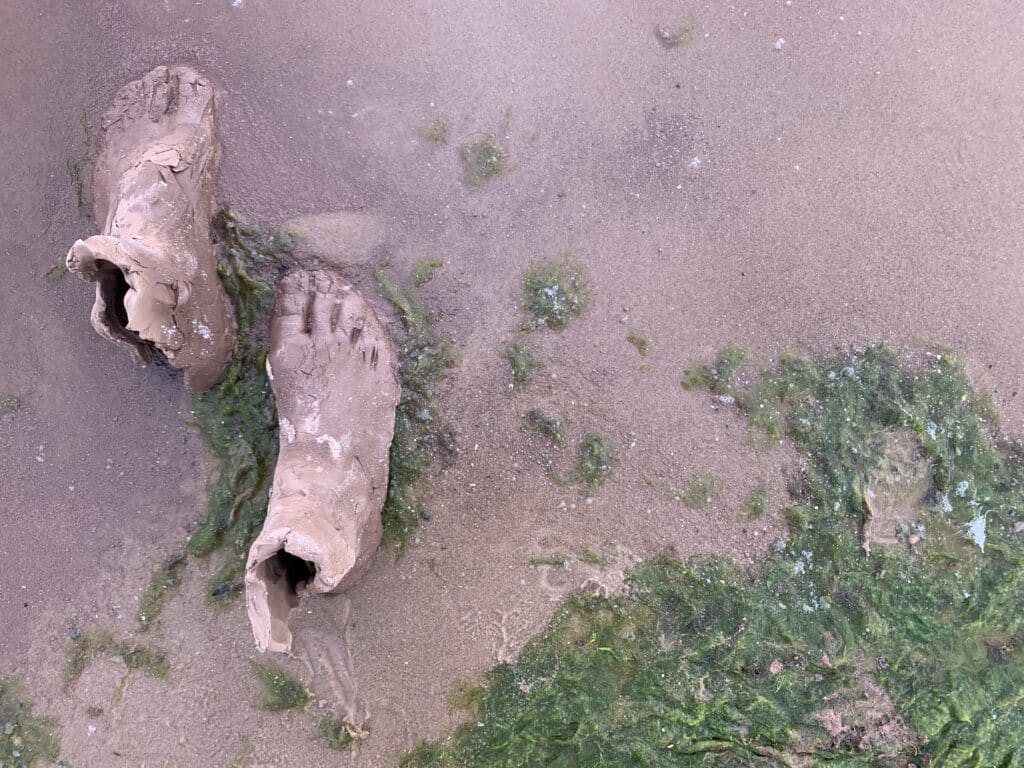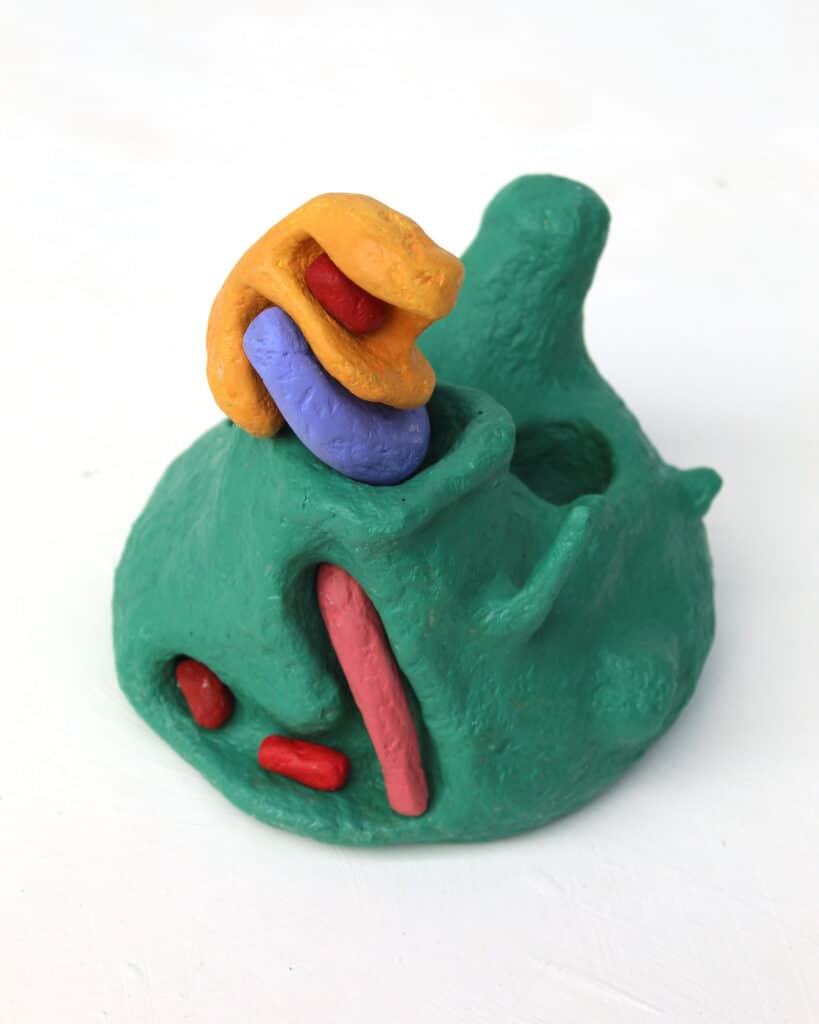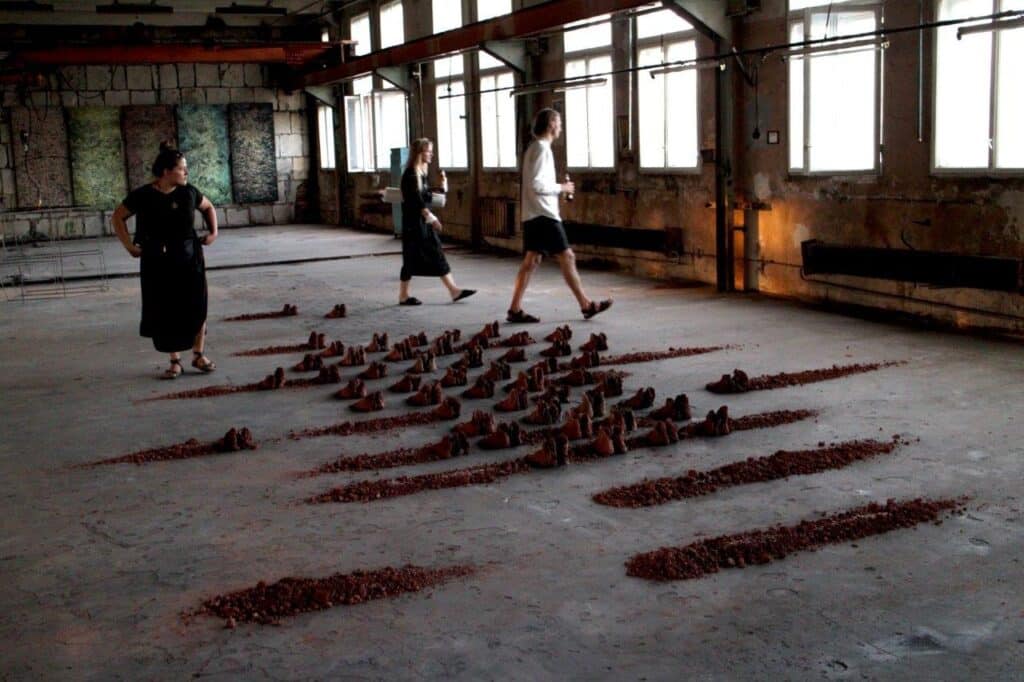“At the beginning of May, we had our first meeting, discussing our monthly topic, Reuse – Recycle. We talked about the different ways an artwork can relate to sustainability, and would like to share some thoughts from these.
Living a minimalistic lifestyle, making less waste, having a smaller footprint is getting more and more relevant topic for many people. In many parts of our life this is getting easier, with opportunities like zero waste shops, community composts, collecting trash selectively, or we can buy products we need from an eco-friendly company. However in the field of making art, where we produce objects after objects and using specific materials, sometimes even dangerous chemicals, being sustainable can lead to controversies.
Sina, a participating student from Germany recycles used cardboards in her works, but paints them with acrylic paint. This brings up the question: Is it even possible to make 100% sustainable artwork? Even if you make non-material works, like a performance piece, still if you document it you have to use the materials of the camera, like photographic film, paper, printing ink or the battery and electricity needed for a digital camera.
There is also the kind of artwork, which really focuses on being natural, for example land-art works, which just use found sticks or stones, or paintings which are made with edible materials, like coffee or wine. One of the participants, Olga from Latvia, makes land-art works. She is a professional potter, sculptor and now she makes big installations from clay, seaweed and grass. Because of the efemer materials, they are disappearing in short time and after it you have only a grass carpet remaining. As in Olga’s works, the beauty of disappearing can be part of the artistic concept also. There are also artworks which use trash, like electric parts, cardboard or plastic pieces. However these will not get back to nature easier than if they would be recycled in a factory, but recycling materials uses much more energy than just reassembling them. Also, because of their makeshift, DIY character they may not last that long and after a few years, they will be just trash.

An other student, Victor from Roma, makes sculptures with recycled materials, like electronic equipments, washing machines, old camera and mechanic springs. His sculpture are the representation of the mythological chimera, which is two animal or more in the same body. For example, one of his works is a union of a mosquito and a grasshopper, which is made from washing machine parts, pumps, iron and plastic. He finds the different parts in his father’s laboratory, who is a technician and works with electrics. When Victor was a child he played a lot with these pieces as toys. The way of working now is also like playing for him. He also paints his sculpture, always choosing one colour, because it gives a similar look to the different materials. It is like the skin of the chimera.
Julia, from Hungary also showed us her works. She makes papermache sculptures, by recycling the paper of her old drawings and paintings. These artworks also reflects on the gesture that many artist in history has done before. When artists have just too many artworks, cannot store it well, or just don’t want them to be part of their lifetime work, they destroy it.

An other aspect of making Art is actually about making pieces that last as long as possible. To use the best canvas, paints or stone, to last hundreds of years. Because art is also what resembles our present culture, which we should preserve for the future. But we can not preserve everything, and we cannot know in the present what will be “important” enough to save for the future generations. Madara, from Latvia shared with us an exhibition of the Latvian National Museum which featured famous watercolour paintings. The museum said that unfortunately this exhibition will never happen again. Because the fragile materials of watercolour will fade, they cannot put it on show again, as light destroys them. So the artworks will be preserved without anyone seeing them except the restaurateurs maybe…
This whole topic brings up many more questions and also it is not just black and white. Even if you don’t focus on sustainability in your art, you can take care about little things, like reusing the same cup for paint mixing, or just buying a camera equipment from an eco-conscious company.
If you would like to be part of the conversation, come to our next meeting on the 8th of June!”
Júlia Csapó, HUFA
(The artworks in the article were prepared by Olga Melekhina – LMA, and Júlia Csapó – HUFA.)
